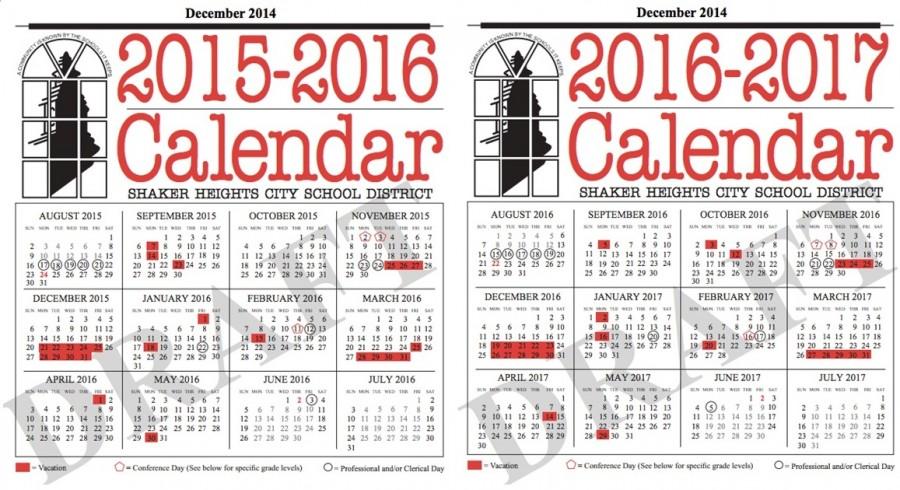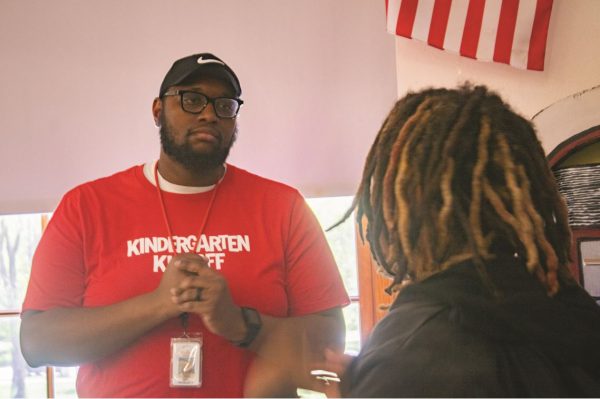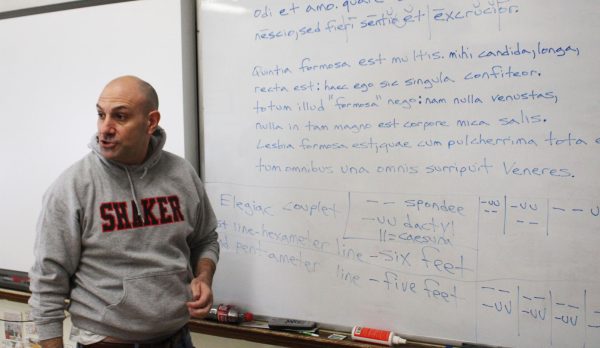New Calendars Extend Thanksgiving Break
The new Shaker calendars, approved by the Board of Education on Jan. 13, extends Thanksgiving break two days and includes a week of professional days before school
In the next two years, students will have an extra three days to prepare their stomachs for Thanksgiving.
The Shaker Board of Education approved calendars for the 2015-2016 and 2016-2017 school years during its Jan. 13 meeting. The board’s Calendar Committee designed the documents.
The extended Thanksgiving break comes with two professional days replacing the Monday and Tuesday that have in past years been instructional days. The committee moved the professional days from days in October and early November to the first two days of Thanksgiving week.
“The full committee, which is comprised of parents, school administrators, district administrators, and teachers, met approximately three times,” wrote Assistant Superintendent of Curriculum and Instruction Marla Robinson in an email. Robinson in also calendar committee chair.
She wrote that the committee began by reviewing previous calendars, then determined “goals and priorities” for the new calendars.
“The calendar changes are a good balance between the needs of our many stakeholders,” wrote school board President Bill Clawson in an email interview. “I appreciate the thoughtful and principle-driven approach utilized by the Calendar Committee.”
Sophomore Monet Franklin-Kidd approves the extended Thanksgiving break.“It’s better than having those two days of school and then going on Thanksgiving,” said Franklin-Kidd. “Teachers try to cram stuff in that’s unnecessary.”
At the Dec. 9 board meeting in which the calendars were first presented, the committee cited a desire to see more weeks of full, five-day instruction as a driving force behind the change.
“Members of the committee and superintendent’s cabinet heard from teachers and parents that frequent interruption of the five-day schedule disrupts learning for students,” wrote Robinson. “Students must repeatedly ‘re-settle’ due to the changes in the number of days per week.” She wrote that the new calendar design will support both students and teachers.
In the 2015-2016 calendar, October is the only month with no holidays or professional days. In past years, the calendars interspersed conference days and professional days throughout October. However, the same phenomenon does not occur in the 2016-2017 school year, as Rosh Hashanah and Yom Kippur both occur in October 2016. Two conference days for kindergarten through twelfth grade are scheduled for the first week of November.
Franklin-Kidd welcomes this move to more five-day weeks, saying that irregular days off can harm more than help. “I think with the professional days, yeah it’s like a day off and everything, but then it’s kind of useless,” she said. “Teachers will still give you homework and expect you to do it.”
“It’s better to have the whole week of school off rather than have [stand alone] professional days,” she said.
Principal Michael Griffith said the committee also aimed to get larger chunks of professional development earlier. In the week prior to the first day of classes, teachers will attend five days of professional development as opposed to three last year.
Griffith said these professional days will include the district convocation, staff professional development, building opening meetings and time set aside for staff to prepare their classrooms.
Griffith said further details of the week are “still being worked out,” but cited that there could be an increased focus on meeting standards set in the District’s Five-Year Strategic Plan adopted last May.
“There’s also a nice chunk of time to look at the district initiatives from the Strategic Plan that we’re talking about or working towards,” said Griffith, referring to new grading practices and instructional practices. “Not just an hour, like an after school meeting, but a full half day to kind of dig into some of those ideas or thoughts.”
English teacher Halle Bauer said the new professional days may take away from her own planning process. “I would like the professional days before school if there was enough time for me to actually be working in my classroom on my planning,” she said. “But the trend is such that I think that we’ll probably be in meetings.”
“If it’s quality professional development, I will be really happy with that,” she said.
The Ohio Department of Education requires 1,001 instructional hours each year. Both the 2015-2016 and 2016-2017 calendars have 172 instructional days of approximately 7.5 hours, or 1290 total hours, well above the state requirements. The 2014-2015 school year had 177 instructional days, five more than the new calendars. The last day of instruction is Jun. 2 for both new calendars, whereas the 2014-2015 school year ends Jun. 9.
“I’m not bothered by starting earlier or finishing earlier at all,” said Bauer. “My concern is in the lopsided semesters. First semester seems to have more instructional time than the second semester.” Bauer teaches Human Rights and Conflict, a semester course.
The 2015-2016 calendar sees first semester taking place from Aug. 24 through Jan. 22 and second semester lasting from Jan. 25 through Jun. 2. While these dates constitute a roughly equal number of days, the second semester contains testing, both new and old, which significantly whittles down instructional time. Common Core-required PARCC testing as well as International Baccalaureate and Advanced Placement testing in May can leave teachers and students scrambling to find time to cover all instructional material.
Bauer thinks that a solution to this problem could be moving midterm finals, usually held weeks into January, to before winter break.
“For the sake of the high school I think it would be nice to have finals before winter break,” said Bauer. “It would give a few extra weeks for second semester and it will be really nice for students. They would actually have a real break.”
Junior J.C. Evans agrees that finals should be held before break. “I’ve complained about that for so long,” he said. “All of the private schools have their finals before break.”
“It would nice to get it out of the way and actually have a break, not where we’re studying the whole time. It’s not a break if we’re stressed,” Evans said.
Griffith said the conversation surrounding midterm exam scheduling has “gone round and round for a number of years,” and referenced the ever-changing state testing policies as a reason to not make the change.
Clawson emphasized that state testing was not a deciding factor in the calendar’s development. “The calendar changes were driven by a need to increase professional development days, a desire to reduce the number of partial school weeks, and to create consistency between buildings for parents,” wrote Clawson. “Mandatory state testing was not a variable in the Calendar Committee’s recommendation.”
“We didn’t want to make substantive changes simply because of the state testing,” said Griffith. “The state keeps changing. They have clean-up bill after clean-up bill. So we don’t want to make a decision when it’s not 100 percent clear what it is we’re dealing with.”
However, Griffith said the change had not been entirely ruled out and is far more likely to happen in the 2016-2017 school year. “The placement of the final exams is not a hard and fast piece of the overall calendar,” he said.






